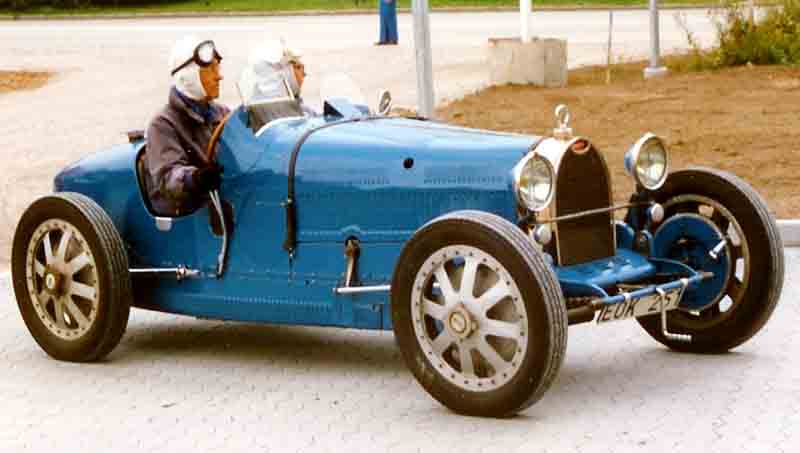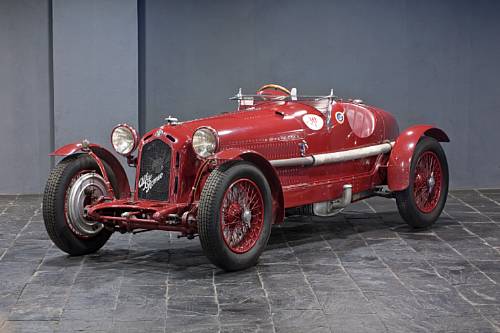Take a step back to the early ages of one of the most innovative inventions in the past millennium the motorcar. The 1920’s marked the start of an era that would push this automotive technology to make cars faster and faster with one of the biggest spectator sports in the world; car racing. Before this age, there had been car racing but the cars were neither extremely fast or exciting. During the 1920’s however, three of the biggest names in the business came into the picture to produce the fastest cars in the world at the time. Bugatti, Alfa-Romeo, and Bentley were all competing in the legendary 24 hour Le Mans endurance race. Each had a different approach to engineer their car to be fast, and be extremely reliable being that it had to run for 24 hours straight.

Ettore Bugatti was the hero of Europe at the time. With his type 35 Bugatti, which had a supercharged straight-8 engine and could top out at around 130 mph, was the reigning champion of Le Mans. He had already won the race several times at this point and Alfa Romeo and Bentley set out to change that.
Alfa Romeo came into competition with the Monza, another supercharged straight-8 engine racer that was slightly heavier but faster than the Bugatti. It did beat the Bugatti it’s second year of racing but the lighter, and more delicate Bugatti did overcome the Alfa eventually.

Nobody had a better design though, than W.O Bentley. Bentley did not believe in supercharging or any added power to an engine. If he wanted a car to be faster, he just made the engine bigger. The Bentley that brought the mighty type 35 down was the Speed 6. A massive 6 liter straight-6 engine that, although was not as fast as the lighter Bugatti, was much more powerful and FAR more reliable. Bentley won Le Mans 3 years in a row after the introduction of the speed 6. Ettore Bugatti called the Bentley the “fastest truck in Europe” which was sort-of a left handed complement. The reason the Bentleys were so reliable was because they were over-engineered. Every part was so robust and reliable that nothing ever broke on them. They just kept running for the full 24 hours and that is where Bugatti’s weak spot was. He could just not keep up with the Bently with his delicate little French car.

Bentley was a brilliant engineer and his theory about keeping things simple was proved right when his cousin took the company over a built a supercharged Bentley that never won Le Mans once. Winning or not though, these three companies paved the way for the future of automotive engineering and motorsport. The links below contain videos of Jay Leno explaining these three cars which he actually owns. Take the time to watch them the history and engineering behind these vehicles is fascinating.
http://www.jaylenosgarage.com/video/1927-bugatti-type-35-pur-sang-replica/1418285/
http://www.jaylenosgarage.com/video/1929-speed-six-bentley-update/1167533/
http://www.jaylenosgarage.com/video/1932-alfa-romeo-monza-replica/1344151/



 The AM-6 Zero from the japaneese did not have enough armor. The Messerschmidt was too heavy and not agile enough. The Spitfire from the British was a brilliant plane with an excellent engine so it was fast, but it also had issues with reliability and range. What the American engineers came up with then, was the p-51. A long range bomber escort fighter that would be able to oversee bombing runs into Europe and back. The Mustang was extremely fast topping out at almost 600 mph due to the v12 roll’s royce engine it used (same as the spitfire). The mustang was the first warbird to have a bubble-style canopy. Visibility was an issue during a dogfight and a pilot needed to be aware of his surroundings. The current slide open cockpits that fighters at the time used were made out of panes of glass and offered very little visibility. Therefore, engineers came up with the bubble canopy which was one solid piece of glass. This allowed pilots to see everything around and gave a huge advantage in a dogfight where you would be able to see your enemy before they spotted you. It also utlized 6 -50 caliber machine guns and was heavily armored and one of the most agile planes in the sky. The men responsible for designing the p-51 were the heroes of WW2, because they won the war for the allies. With the p-51s escorting the bombing missions, the bombers could drop their load and return home safely with almost every mission being a success. Just another prime example of how the critical steps of the design process are utlized to produce a truley perfect product; the p-51 mustang in this case.
The AM-6 Zero from the japaneese did not have enough armor. The Messerschmidt was too heavy and not agile enough. The Spitfire from the British was a brilliant plane with an excellent engine so it was fast, but it also had issues with reliability and range. What the American engineers came up with then, was the p-51. A long range bomber escort fighter that would be able to oversee bombing runs into Europe and back. The Mustang was extremely fast topping out at almost 600 mph due to the v12 roll’s royce engine it used (same as the spitfire). The mustang was the first warbird to have a bubble-style canopy. Visibility was an issue during a dogfight and a pilot needed to be aware of his surroundings. The current slide open cockpits that fighters at the time used were made out of panes of glass and offered very little visibility. Therefore, engineers came up with the bubble canopy which was one solid piece of glass. This allowed pilots to see everything around and gave a huge advantage in a dogfight where you would be able to see your enemy before they spotted you. It also utlized 6 -50 caliber machine guns and was heavily armored and one of the most agile planes in the sky. The men responsible for designing the p-51 were the heroes of WW2, because they won the war for the allies. With the p-51s escorting the bombing missions, the bombers could drop their load and return home safely with almost every mission being a success. Just another prime example of how the critical steps of the design process are utlized to produce a truley perfect product; the p-51 mustang in this case.




